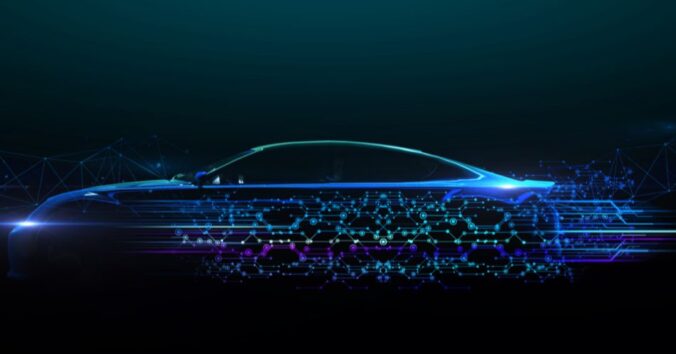Find out more about our partner SHERPA Engineering with the interview Guillaume BRUNIQUEL

SHERPA Engineering puts multi-criteria system modeling and simulation at the heart of customer engineering by promoting an object/process approach to control complexity, capitalize and improve resource reuse (project gas pedal) but also to reduce system design and project management risks.
Let’s find together the interview of Guillaume BRUNIQUEL, Director of International Development at SHERPA Engineering, who tells us about this company and the way SNECI supports them on a daily basis.
Hello Guillaume, can you introduce yourself and tell us about SHERPA Engineering?
My name is Guillaume BRUNIQUEL, Director of International Development, and as in SMEs we like to wear several hats, I am also responsible for the Strategic Business Area (SBA) Energy, which centralizes all projects related to the energy field.
I started at SHERPA Engineering almost 25 years ago in 1998. It has been 5 years of my carrer and then took a 13-year detour at PSA. I worked a lot in modeling and management in the field of cabin thermics.
I came back to Sherpa 5 years ago to take on the role I just described.
Does this mean that life at SHERPA Engineering is good?
You know the decision to leave a large group like PSA is a difficult one. When I talk about PSA around me, everyone knows about it, whereas SHERPA Engineering is not always the case for people who are not in the field. But notoriety is not everything.
In an SME, you have more freedom of action, more space to take initiatives, to direct or take part in the strategic decisions of the company.
This is ultimately what is most motivating.
Tell us about the history of SHERPA Engineering. How long has the company been in existence, your activity?
SHERPA Engineering is a company that is 25 years old, it was created in 1997 by two co-founders, Atilla Yazman and Jean Brunet, who are both engineers, one specializing in energy and aeronautics, the other in software tools, hydraulics and modeling.
They created SHERPA Engineering to meet a need of PSA at the time in modeling complex systems in order to develop control software. And that’s how Sherpa was born. I was the 4th person hired at that time.
Our slogan is “the system approach through modeling”. When we model a complex system, it allows us to understand the system and to test it in the digital world with a very wide coverage in order to evaluate its performance or to develop its control command SW.
Quite naturally, as we started our activity to meet the needs of PSA, it is still today in the automotive sector that the majority of our activities are concentrated.
The aerospace sector must be buoyant, right?
Yes, in the aerospace sector we have two major customers, on the one hand the ESA (European Space Agency) with the Melissa project, and on the other hand the Safran Group, where we work mainly for Safran Aircraft Engine and Safran Landing Systems.
Aerospace is a very promising field that diversifies our activities since we do not only mobilize for Safran, we also do systems engineering, which you have probably already heard of under the recent acronym MBSE (Model Based System Engineering), it is in the air of time.
How does SHERPA Engineering renew itself in 25 years of existence when its main sector, the automotive industry, is becoming more and more complex, changing & with numerous regulatory constraints?
The key to renew and dictate the strategy of a company is to observe the environment in order to anticipate its trends.
In our field of influence, it is the electrification of mobility that we have seen coming from quite a distance. Our strength in the field of modeling is that we don’t need 6 years to anticipate innovations, in 6 months we are able to react, either through recruitment or through R&D projects, to position ourselves in niche sectors with very high potential. In this respect, we invest heavily in internal R&D.
R&D in SHERPA Engineering
20% of our turnover is invested each year to involve our engineers in R&D projects, whether they are European-funded projects or internal R&D projects that enable us to capitalize on our business, develop support tools, training modules, etc.
And it is this R&D strength that enables us to anticipate our positioning in innovative fields. An example comes to mind: six years ago, we observed that ADAS were becoming increasingly important, and in one year we built a team specializing in ADAS, AI, trajectory control, shape identification, and SLAM, and today we have a specialized team of fifteen people working on projects in this cutting-edge field.
At the moment we are investing in a range of roof boxes. These are systems that allow us to acquire data and test algorithms related to autonomous driving. The box can be adapted to the roof of any vehicle, it is equipped with radars, GPS, cameras, infrared sensors, … in an extensible and customizable way, it is a real mobile laboratory. There is a real need in this field, the real challenge is the acquisition, interpretation and processing of data.
We have to take advantage of the natural evolution of the automotive market and technologies: electrification, hydrogen, ADAS, but also invest, and that’s what we do thanks to our R&D, which allows us to target innovative offers with a head start.
As an SME, we don’t have a huge strike force. However, we are agile. This agility allows us to position ourselves effectively. We can do so at the right time.
Hydrogen is the same thing, it’s a field that has been constantly moving for two years.
Indeed, hydrogen is moving very fast and in France, you have big players emerging just about everywhere, whether it’s in hydrogen production or storage.
In the field of hydrogen, we have more than 20 years of experience in fuel cells. But for the past two years, we have seen the sector boosted by the combustion of hydrogen, another lever for achieving carbon neutrality objectives.
There are many studies on retrofitting diesel or gasoline engines to adapt them to hydrogen combustion. The applications are more on truck or bus fleets. Since last year we have invested in updating our modeling libraries to adapt them to hydrogen combustion.
To answer your question, here again we are trying to anticipate market developments.
You also have an export activity for which you are responsible, can you tell us a little more about it?
Five years ago, when I came back to SHERPA Engineering , I took on the role of export manager. We have a VIE in Japan, an engineer in Shanghai, China, and we have created several subsidiaries in Morocco (70 engineers specializing in energy system simulation), Romania (8 engineers specializing in embedded SWs), and Tunisia (an emerging pool of engineers specializing in systems engineering), not to mention our JV in Turkey, which hosts 3 engineers specializing in control modeling.
This makes me think that Hervé Champion, SNECI’s Strategy & Business Development VP, often talks to me about Korea. I know that SNECI is very well established in this country, but it is not in our sights at the moment.
We have an engineering partner in Japan who is very active in the region. We were looking for another partner in China. However, China is a complicated destination. Therefore, we asked SNECI to conduct a market study for us.
So you asked SNECI China, to what extent?
We wanted to create a partnership in China. So initially we approached SNECI China, last year after the PFA’s component A and component B.
We first approached SNECI under part A to conduct a market study in China. It had been 3 years since we had any sales in China and the market study showed good prospects. There were promising leads that we wanted to develop, so we invested in SNECI China as part of part B.
We then activated a commercial support for a period of 6 months with SNECI China.
Our offer is difficult to sell. Offering engineering when there is no team is complicated because customers quickly ask “how many of you are there? Having a local contact is essential but not sufficient in engineering. The search for an engineering partner was therefore a key element in strengthening our impact on the ground.
Is SNECI a company you would recommend?
Yes, SNECI is a company that specializes in a key area. It has extensive knowledge of international markets. Especially in Asia, with a focus on countries like Korea and China.
There is one element that I appreciated. For part A and part B, SNECI was able to surround itself with partners. These partners were enlisted to meet our specific needs.
So yes, I recommend SNECI.
Are there any new features that you would like to implement at SHERPA Engineering ?
For the past two years, we have been investing heavily in benchmark simulators and the digitization of benchmarks for electric vehicle manufacturers. Competitive analysis remains a key element in automotive engineering. Manufacturers still have a very physical approach and we have developed a factory to produce electric vehicle simulators that allow us to carry out tests in the digital world on competing vehicles to evaluate their performance, autonomy, behavior in extreme climates, etc. This offer is increasingly successful because it brings a very healthy balance between the physical and the digital.
If you want to know more about SHERPA Engineering, its products and news, please visit their website or follow them on LinkedIn
SNECI and market study support:
We provide our clients with the knowledge and information necessary. This knowledge helps them better understand the sectors and markets. Understanding these sectors and markets allows them to define strategies. These strategies are adapted to their situation.
Our expertise is based on :
- Identification of potential customers, partners and competitors in a given geographical area
- SWOT analysis
- Detection of market opportunities after first approaching potential customers
- Study of the economic and technological positioning of solutions
- Elaboration of a market penetration and marketing strategy
- Creation of a business plan and associated investment proposal
You will have understood that SNECI has 70 years of existence. SNECI accompanies both manufacturers and suppliers. It provides them with the means to achieve operational excellence.
Our expertise allows us to offer solutions for supplier sourcing. We also provide audits and management of complex industrial projects (such as dismantling, transfer, etc.). Additionally, we offer training and coaching services. We handle sorting and reworking tasks. Not to mention our involvement in purchasing and logistics.
If you too would like to benefit from SNECI’s support in improving industrial performance, do not hesitate to contact us via our website.





